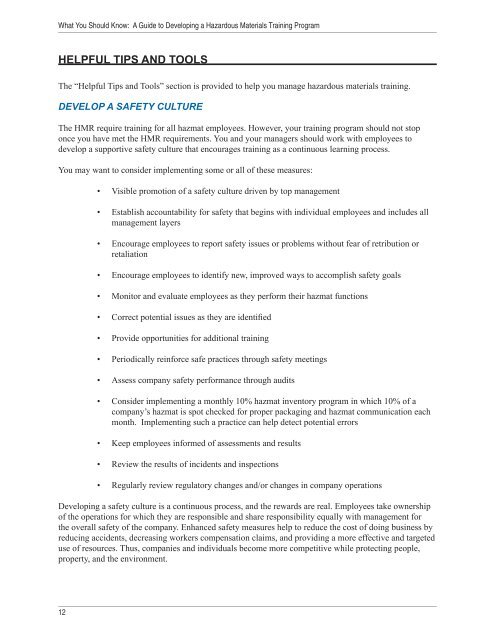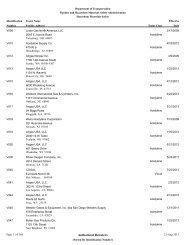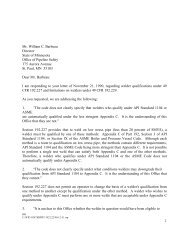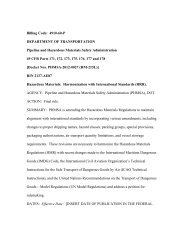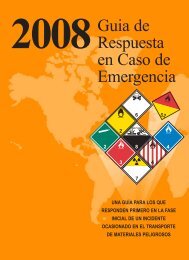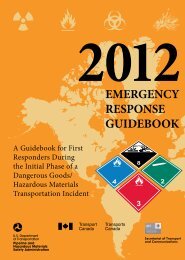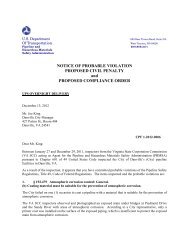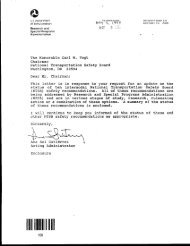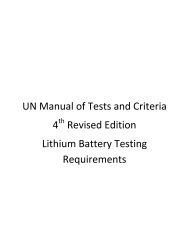Training Guidance7609am.indd - PHMSA - U.S. Department of ...
Training Guidance7609am.indd - PHMSA - U.S. Department of ...
Training Guidance7609am.indd - PHMSA - U.S. Department of ...
You also want an ePaper? Increase the reach of your titles
YUMPU automatically turns print PDFs into web optimized ePapers that Google loves.
What You Should Know: A Guide to Developing a Hazardous Materials <strong>Training</strong> Program<br />
HELPFUL TIPS AND TOOLS<br />
The “Helpful Tips and Tools” section is provided to help you manage hazardous materials training.<br />
DEVELOP A SAFETY CULTURE<br />
The HMR require training for all hazmat employees. However, your training program should not stop<br />
once you have met the HMR requirements. You and your managers should work with employees to<br />
develop a supportive safety culture that encourages training as a continuous learning process.<br />
You may want to consider implementing some or all <strong>of</strong> these measures:<br />
12<br />
•<br />
•<br />
•<br />
•<br />
•<br />
•<br />
•<br />
•<br />
•<br />
•<br />
•<br />
•<br />
•<br />
Visible promotion <strong>of</strong> a safety culture driven by top management<br />
Establish accountability for safety that begins with individual employees and includes all<br />
management layers<br />
Encourage employees to report safety issues or problems without fear <strong>of</strong> retribution or<br />
retaliation<br />
Encourage employees to identify new, improved ways to accomplish safety goals<br />
Monitor and evaluate employees as they perform their hazmat functions<br />
Correct potential issues as they are identifi ed<br />
Provide opportunities for additional training<br />
Periodically reinforce safe practices through safety meetings<br />
Assess company safety performance through audits<br />
Consider implementing a monthly 10% hazmat inventory program in which 10% <strong>of</strong> a<br />
company’s hazmat is spot checked for proper packaging and hazmat communication each<br />
month. Implementing such a practice can help detect potential errors<br />
Keep employees informed <strong>of</strong> assessments and results<br />
Review the results <strong>of</strong> incidents and inspections<br />
Regularly review regulatory changes and/or changes in company operations<br />
Developing a safety culture is a continuous process, and the rewards are real. Employees take ownership<br />
<strong>of</strong> the operations for which they are responsible and share responsibility equally with management for<br />
the overall safety <strong>of</strong> the company. Enhanced safety measures help to reduce the cost <strong>of</strong> doing business by<br />
reducing accidents, decreasing workers compensation claims, and providing a more effective and targeted<br />
use <strong>of</strong> resources. Thus, companies and individuals become more competitive while protecting people,<br />
property, and the environment.


